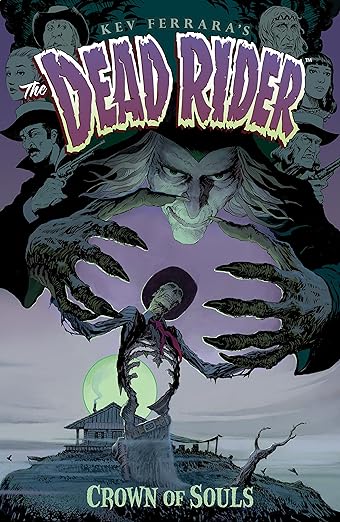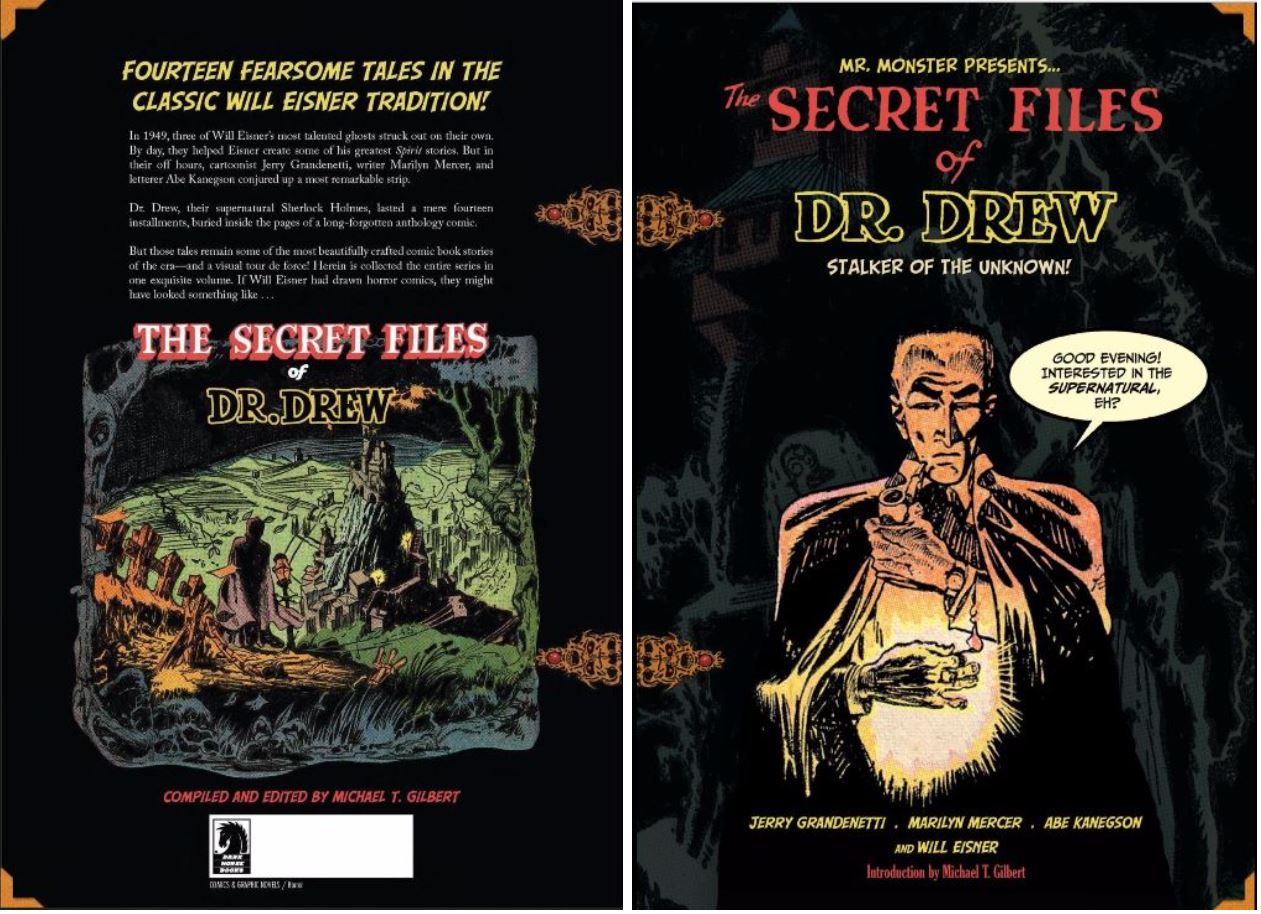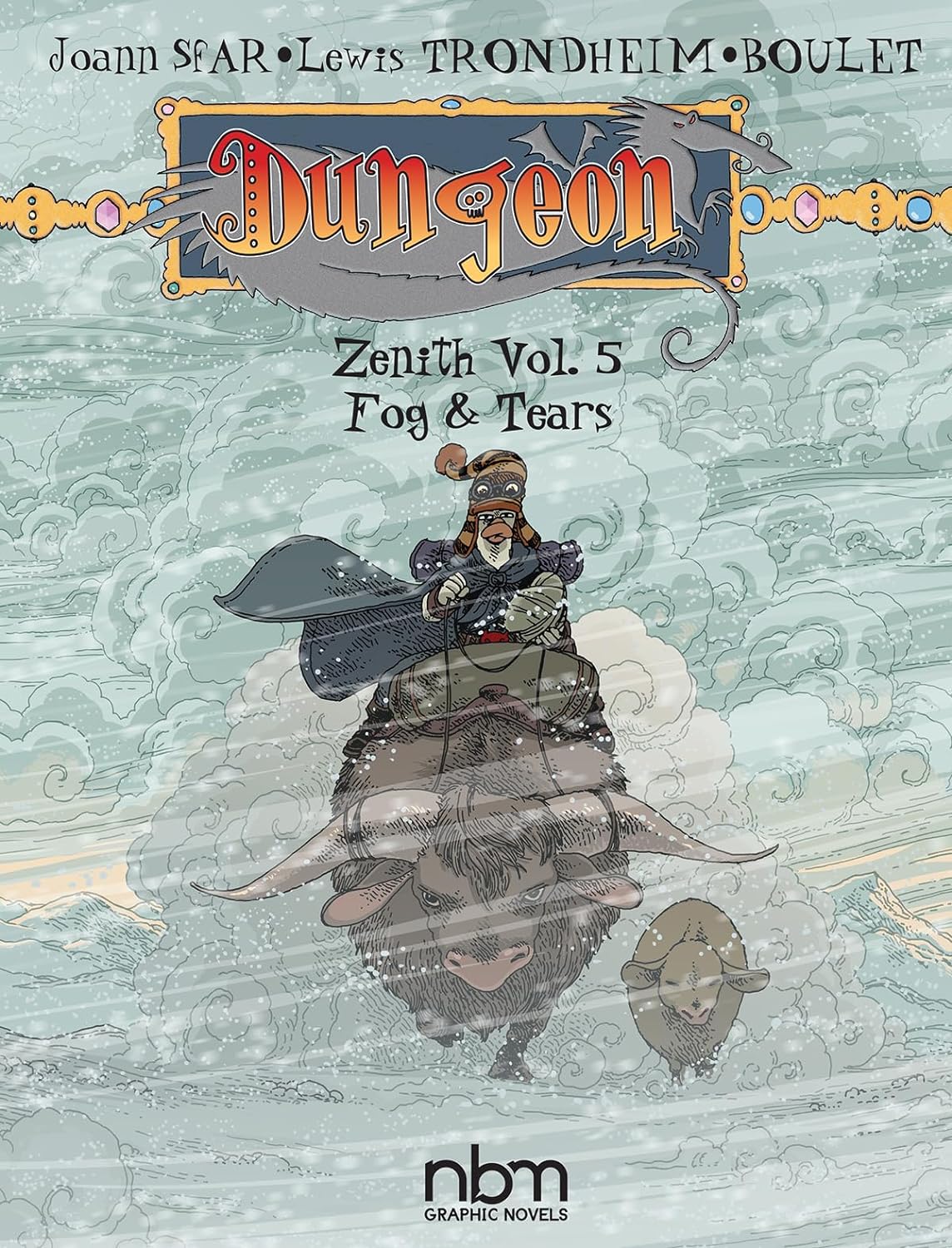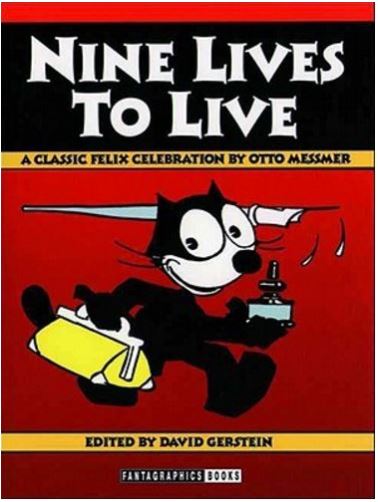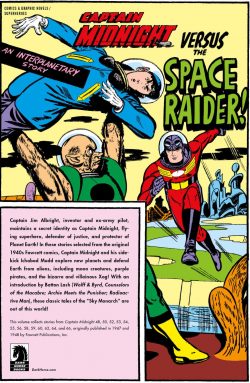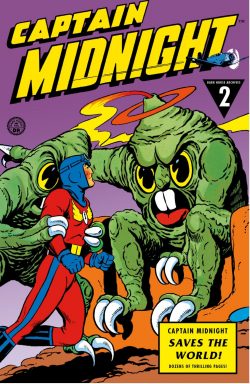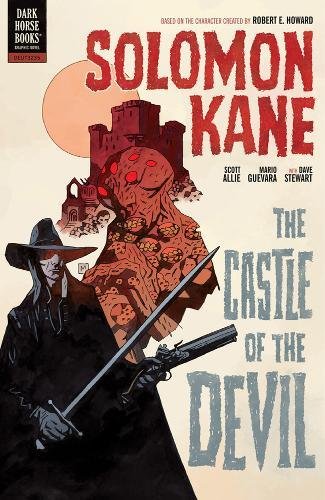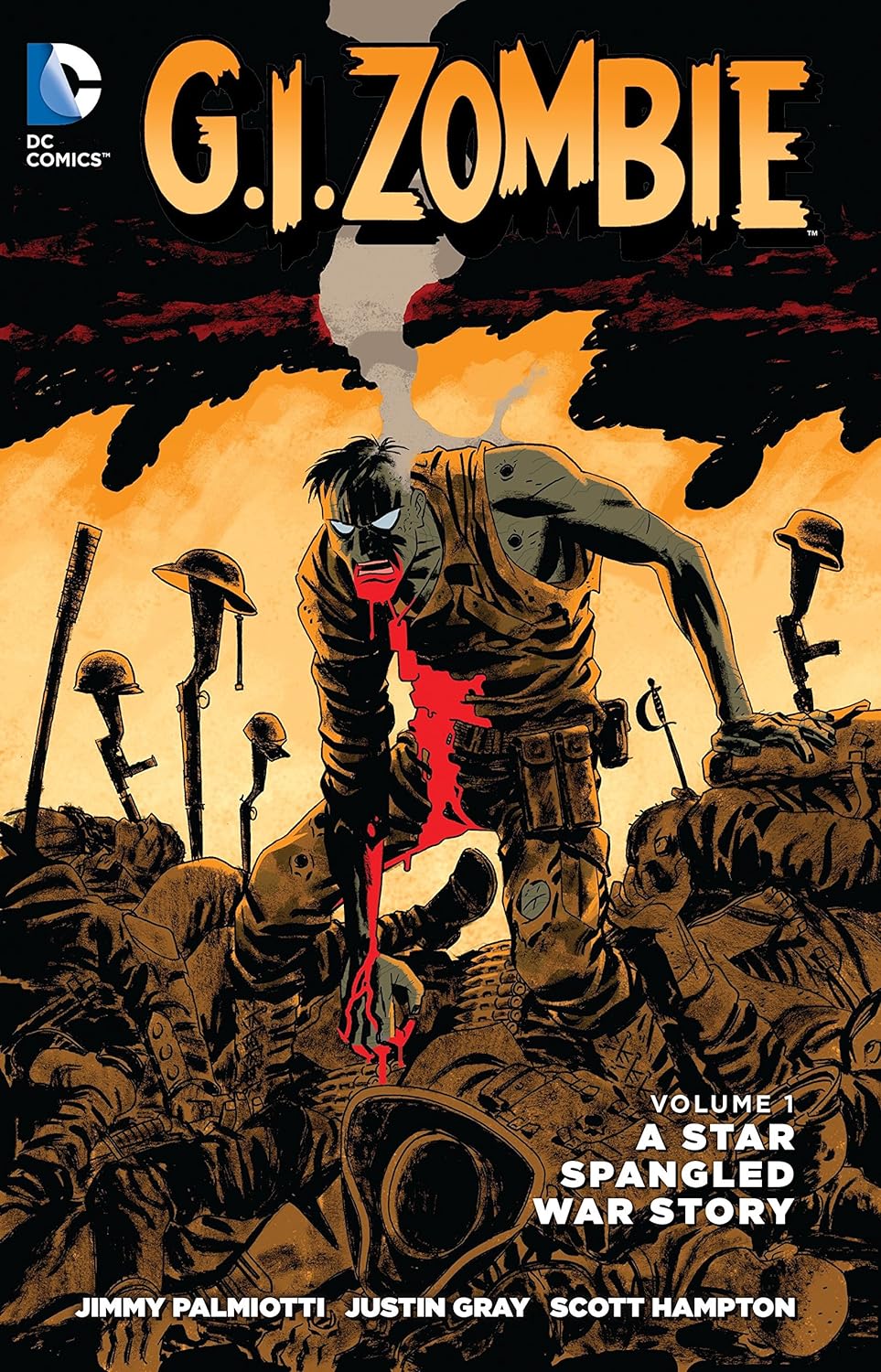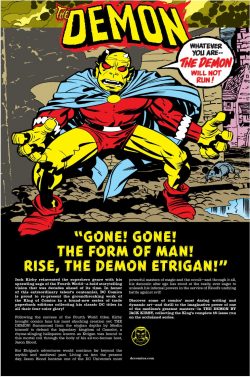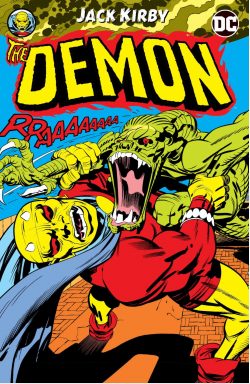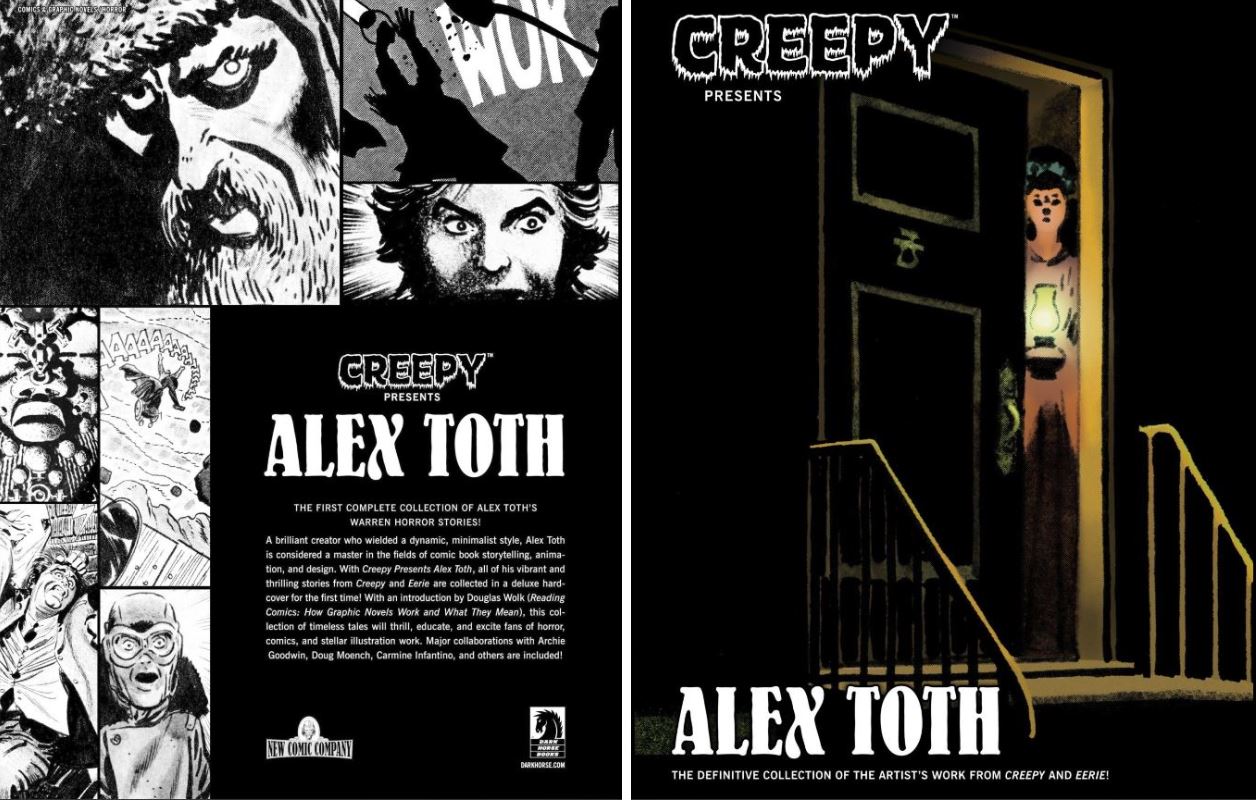
By Alex Toth, with Archie Goodwin, Gerry Boudreau, Rich Margopoulos, Roger McKenzie, Doug Moench, Nicola Cuti, Bill DuBay, Steve Skeates,Leopoldo Durañona, Leo Summers, Romeo Tanghal, Carmine Infantino & various (Dark Horse Comics)
ISBN: 978-1-61655-692-1 (HB) eISBN: 978-1-63008-194-2
Once upon a time the short complete tale was the sole staple of the comic book profession, where the intent was to deliver as much variety and entertainment fulfilment as possible to the reader. Sadly, that particular discipline is all but lost to us today.
Alex Toth was a master of graphic communication who shaped two different art-forms and is largely unknown in both of them.
Born in New York in 1928, the son of Hungarian immigrants with a dynamic interest in the arts, Toth was a prodigy and, after enrolling in the High School of Industrial Arts, doggedly went about improving his skills as a cartoonist.
His earliest dreams were of a strip like Milton Caniff’s Terry and the Pirates, but his uncompromising devotion to the highest standards soon soured him on the newspaper market when he discovered how hidebound and innovation-resistant that family-values-obsessed industry had become whilst he was growing up.
At age 15, he sold his first comic book works to Heroic Comics and, after graduating in 1947, worked for All American/National Periodical Publications (who would amalgamate and evolve into DC Comics) on Dr. Mid-Nite, All Star Comics, Green Lantern, The Atom, Johnny Thunder, Sierra Smith, Johnny Peril, Danger Trail and a host of other two-fisted fighting features.
On the way he dabbled with newspaper strips (see Casey Ruggles: the Hard Times of Pancho and Pecos) and confirmed that nothing had changed…
Constantly aiming to improve, he never had time for fools or formula-hungry editors who wouldn’t take artistic risks. In 1952 Toth quit DC to work for “Thrilling” Pulps publisher Ned Pines who was retooling his prolific Better/Nedor/Pines companies (Thrilling Comics, Doc Strange, Fighting Yank, Black Terror and others) into Standard Comics: a comics house targeting older readers with sophisticated, genre-based titles.
Beside his particularly favourite inker Mike Peppe and fellow graphic artisans Nick Cardy, Mike Sekowsky, Art Saaf, John Celardo, George Tuska, Ross Andru & Mike Esposito, Toth set an incredibly high bar for a new kind of story-telling. In a cavalcade of short-lived titles dedicated to War, Crime, Horror, Science Fiction and especially Romance, the material produced was wry, restrained and thoroughly mature. After Simon & Kirby invented love comics, Standard, through artists like Cardy and Toth and writers like amazing, unsung Kim Aamodt, polished and honed the genre, routinely turning out clever, witty, evocative and yet tasteful melodramas and heart-tuggers both men and women could enjoy.
Before going into the military, where he still found time to create a strip (Jon Fury for the US Army’s Tokyo Quartermaster newspaper The Depot’s Diary) ,Toth illustrated 60 glorious tales for Standard; as well as some pieces for EC and others.
On his return to a different industry – he didn’t much like – Toth split his time between Western/Dell/Gold Key (Zorro and movie/TV adaptations) and National (assorted short pieces, superhero team-ups, Hot Wheels and Eclipso): doing work he increasingly found uninspired, moribund and creatively cowardly.
Before long he moved primarily into television animation: character and locale designing for Space Ghost, Herculoids, Birdman, Shazzan!, Scooby-Doo, Where Are You? And Super Friends among so many others. He returned sporadically to comics, setting the style and tone for DC’s late 1960’s horror line in House of Mystery, House of Secrets and especially The Witching Hour, whilst illustrating more adult fare in Warren’s Creepy, Eerie and The Rook.
In the 1980s he redesigned The Fox for Red Circle/Archie, produced stunning one-offs for Archie Goodwin’s Batman and war comics (whenever they offered him “a good script”) and contributed to landmark/anniversary projects like Batman: Black and White. His later, personal works included European star-feature Torpedo and magnificently audacious Bravo for Adventure!: both debuting at the publishing company owned by Jim Warren.
Alex Toth died of a heart attack at his drawing board on May 27th 2006.
The details are fully recounted in Douglas Wolk’s biographically informative Foreword, as are hints of the artist’s later spells of creative brilliance at DC, the growing underground movement and nascent independent comics scene. Whilst working for Warren (intermittently and between 1965 and 1982) Toth enjoyed a great deal of editorial freedom and cooperation. He produced 21 starkly stunning monochrome masterpieces – many self-penned or written by fellow legend Archie Goodwin – and all crafted without interference from the Comics Code Authority’s draconian and nonsensical rules.
They ranged from wonderfully baroque and bizarre fantasy to spooky suspense and science fiction yarns, limited only by the bounds of good taste… or at least as far as horror tales can be. The uncanny yarns appeared in monochrome anthologies Creepy (# 5-7, 9, 75-80, 114, 122-125, 139) and Eerie (2, 3, 64, 65 and 67), affording the master of minimalism time and room to experiment with not only a larger page, differing styles and media, but also dabble in then-unknown comics genres.
Those lost Warren stories were gathered into this spectacular oversized (284 x 218 mm) hardback compendium (and eBook): part of a series of all-star artist compilations including Corben, Wrightson, Ditko and more – hereafter an appreciative Foreword from critic and historian Douglas Wolk.
The terror treats open with the short shockers from Creepy and – moodily rendered in grey wash-tones –‘Grave Undertaking’ comes from #5 (October 1965). Scripted by Goodwin, the period piece relates the shocking comeuppance of a funeral director who branches out into providing fresh corpses for the local medical school, after which December’s #6 offers insight into ‘The Stalkers’, as a troubled soul seeks psychoanalytic help for hallucinations of aliens plaguing him…
Prophetic visions play a part in ‘Rude Awakening!’ (#7, February 1966) as a guy flees omens of being gutted by a madman, before Toth reverted to his minimalist line style for ‘Out of Time’ (#9, June). Here a murderous mugger seeks sanctuary for his latest crime and ends up making a devil’s bargain…
A long absence ended in November 1975 as Creepy #75 heralded a wealth of new stories from Toth, beginning with Gerry Boudreau’s crime-thriller ‘Phantom of Pleasure Island’ wherein a mob-owned San Diego funfair is plagued by a sinister sniper. Private Eye Hubb Chapin is on the case, but his dogged determination to find the killer opens a lot of festering sores his client should have left well alone…
Spectacularly experimental and powerfully stark, ‘Ensnared!’ (scripted by Rich Margopoulos for #76, January 1976) is another paranoiac psychodrama with science fiction underpinnings, before Toth begins writing his own stories in Creepy #77 (February). A wash-&-tone tour de force depicting the strange fate of missing air mail pilot ‘Tibor Miko’ in 1928…
March’s issue #78 continued the tonal terrors with another 1920s tale exposing the stunning secret of a celluloid icon in ‘Unreeal!’ before we storm into Indiana Jones territory with ‘Kui’ (#79, May) wherein a couple of anthropologists make the holiday find of a lifetime on a deserted tropical island.
This tranche of Toth treats ends with ‘Proof Positive’ from June’s issue #80 wherein a gang of fraudulent patent lawyers and their ruthless honeytrap pay the ultimate price for gulling the wrong inventor. When Toth returned in January 1980 his first story was another chilling collaboration with old pal Goodwin. Rendered in overpowering scratchy line and solid blacks, Creepy #114’s ‘The Reaper’ details how a virologist with six months to live decides he’s not dying alone and leaving a world of idiots behind him…
Issue #122 (October 1980) found Toth inking veteran illustrator Leo Durañona for the Roger McKenzie-scripted civil war yarn ‘The Killing!’ Here a Northern raiding party occupying a mansion endure conflicting passions of lust and vengeance before death inevitably settles all scores.
Doug Moench writes, Leo Summers draws and Toth inks & tones ‘Kiss of the Plague!’ (#123, November 1980) as a welter of grisly murders slowly subtracts inhabitant of a seemingly accursed house, after which ‘Malphisto’s Illusion’ (#124, January 1981) finds Nichola Cuti, Alexis Romero (AKA Romeo Tanghal) & Toth explaining in grisly detail just how a stage magician pulls off his greatest trick. #125’s ‘Jacque Cocteau’s Circus of the Bizarre’ (McKenzie, Carmine Infantino & Toth) maintains the entertainment motif with a short shocker about a freak show like no other…
Toth’s last Creepy gig was another Goodwin collaboration. Issue #139 (July 1982) again featured the master’s moodily macabre tone painting in a grim, post-apocalyptic rumination on ‘Survival!’
Toth’s tenure on companion anthology Eerie #2 was relatively brief, beginning with the second issue (March 1966). ‘Vision of Evil’ was the first of two Goodwin tales limned in tone and bold line, revealing the fate of an overly-arrogant art collector who wouldn’t take no for an answer, whilst #3’s ‘The Monument’ (May 1966) saw an equally obnoxious architect accidentally engineer his own doom by stealing ideas from an old idol…
Eerie #64 offered intolerance, fear and sentiment in equal measure in ‘Daddy and the Pie’ (written by Bill DuBay). In Depression-era America a very alien stranger is made welcome by one hard-up family despite the barely repressed hostility of his neighbours…
A very modern monster’s exploits comprise the end of this stupendous collection as Steve Skeates pens a wry tale of serial killers and doughty detectives in old London town. ‘The Hacker is Back’ (#65 April) depicts a maniac’s return to slaughter after a decade’s hiatus and leads to an inconclusive resolution before ‘The Hacker’s Last Stand!’ (#67 August) finds forces of law and order overwhelmed by a killing spree unlike any other…
This voluminous volume has episodes which terrify, amaze, amuse and enthral: utter delights of fantasy fiction with lean, stripped-down plots and a mordant tone which lets the art set the tone, push the emotions and tell the tale, from times when a story could end sadly as well as happily and only wonderment was on the agenda, hidden or otherwise.
These stories display the sharp wit and dark comedic energy which epitomised both Goodwin and Warren, channelled through Toth’s astounding versatility and storytelling acumen: another cracking collection of his works not only superb in its own right but also a telling affirmation of the gifts of one of the art-form’s greatest stylists.
This is a book serious comics fans would happily kill, die or be lost in a devil-dimension for.
Creepy, the Creepy logo and all contents © 1965, 1966, 1975, 1976, 1980. 1981, 1982, 2015 by New Comic Company. All rights reserved.
